John Hurrell – 17 September, 2017
Sometimes this dominant field is complicated further by chromatic shifts occurring from left to right, so that grey or khaki is on the left, ochre in the middle, and dark sienna along the righthand edge. All the while subtle blurry forms jostle in the background of this lopsided field. Sometimes too the stacked up striations, the scratchy lines of thin ‘anterior' paint are less wobbly or tremulous than other examples in the series: more formally severe.
In this series of abstractions, that at first glimpse you could perceive as monochromes, Geoff Thornley uses thinly mixed, horizontally applied oil paint and the support of textured muslin (over board) to explore ambiguities of manual mark and space. Anterior is played against posterior: earlier ‘random’ marks of semi-dry paint peek through a screen of horizontally regimented scratchy strokes using wide brushes with coarse, less-flexible bristles. The blobby splotchy forms of different, tonally related, colours are partially hidden, behind the dominant field that is usually grey or khaki. You can also see slivers of the original under-painting poking out from under the four straight edges of the square shaped main coat.
Sometimes this dominant field is complicated further by chromatic shifts occurring from left to right, so that grey or khaki is on the left, ochre in the middle, and dark sienna along the righthand edge. All the while subtle blurry forms jostle in the background of this lopsided field. Sometimes too the stacked up striations, the scratchy lines of thin ‘anterior’ paint are less wobbly or tremulous than other examples in the series: more formally severe. Thornley‘s spatial structure is related to that of say James Cousins’ use of layered space, but not as convoluted or dense: it’s more traditional in its expectations of the viewer’s standing position and use of distance—like looking through Venetian blinds—and much murkier.
With the two spatial planes, picture plane (anterior) and illusionistic (posterior) being activated, you have contrasts within each of mood, varying from regular (evenly patterned or rhythmical) repetition-a form of classicism—to more ‘emotive’ and irregular ‘expressive’ agitation. Plus, the curvy background colours themselves change because of the placement of the final horizontal layer. They are optically altered by its superimposition, while that horizontal system of parallel strokes relies in turn on the tooth of the underlying gesso, the drag of the tooth from the open weaved muslin, the lack of give from the supporting board, and the resistance to flexibility of the brush’s stiff bristles.
Thornley‘s two fields fascinate in their blending interaction. Partially concealed by the hovering striated anterior square, the posterior back painting pulses with its muted undefined shapes, its colours more intense when briefly exposed at the outer edges. There is an intimate conversation between centre and periphery, front plane and the semi-hidden beyond.
John Hurrell
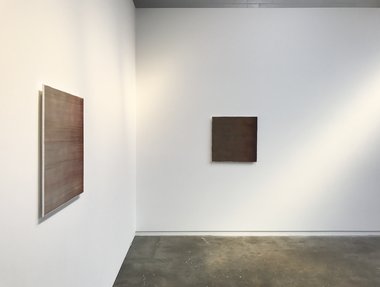
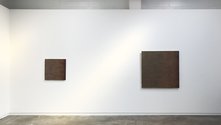
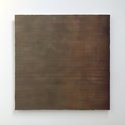



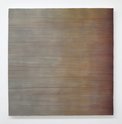

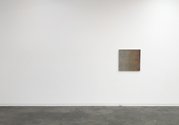
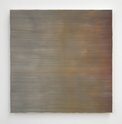
 Two Rooms presents a program of residencies and projects
Two Rooms presents a program of residencies and projects Advertising in this column
Advertising in this column



This Discussion has 0 comments.
Comment
Participate
Register to Participate.
Sign in
Sign in to an existing account.